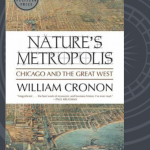Relics and Social Networks

Tooth of Mary Magdalene
This is a photo of a reliquary holding a tooth of Mary Magdalene, held at the Metropolitan Museum of Art in New York. As I stood in front of this piece and took this photo I could not ignore the flood of information it conveyed to me by its symbolism. A mixture of cultural, historical, religious and ethical information.
Relics were an early method of constructing a social network that spread over many geographical areas and cultures. Their authenticity was not relevant (there are more “nails of the cross” than the number that were actually used, if at all). Important is the effective system for the dissemination of information. “Sticky” information carried and spread around the world. Relics represent units of cultural history and ethical meaning, beyond being objects of veneration.
Yet more than that, relics created a form of social cohesion around its significance. A cohesion that went beyond geographical boundaries. One has to think only of the pilgrimages to Santiago de Compostela or the veneration that relics like the Holy Shroud inspire in persons scattered around the world.
It may be interesting to show that a network of relics can be structured that contains the most relevant information about the shared culture and faith of a group. And how this network of symbols is the basis for a superimposed social network connected by the information developed by the same group over time.





